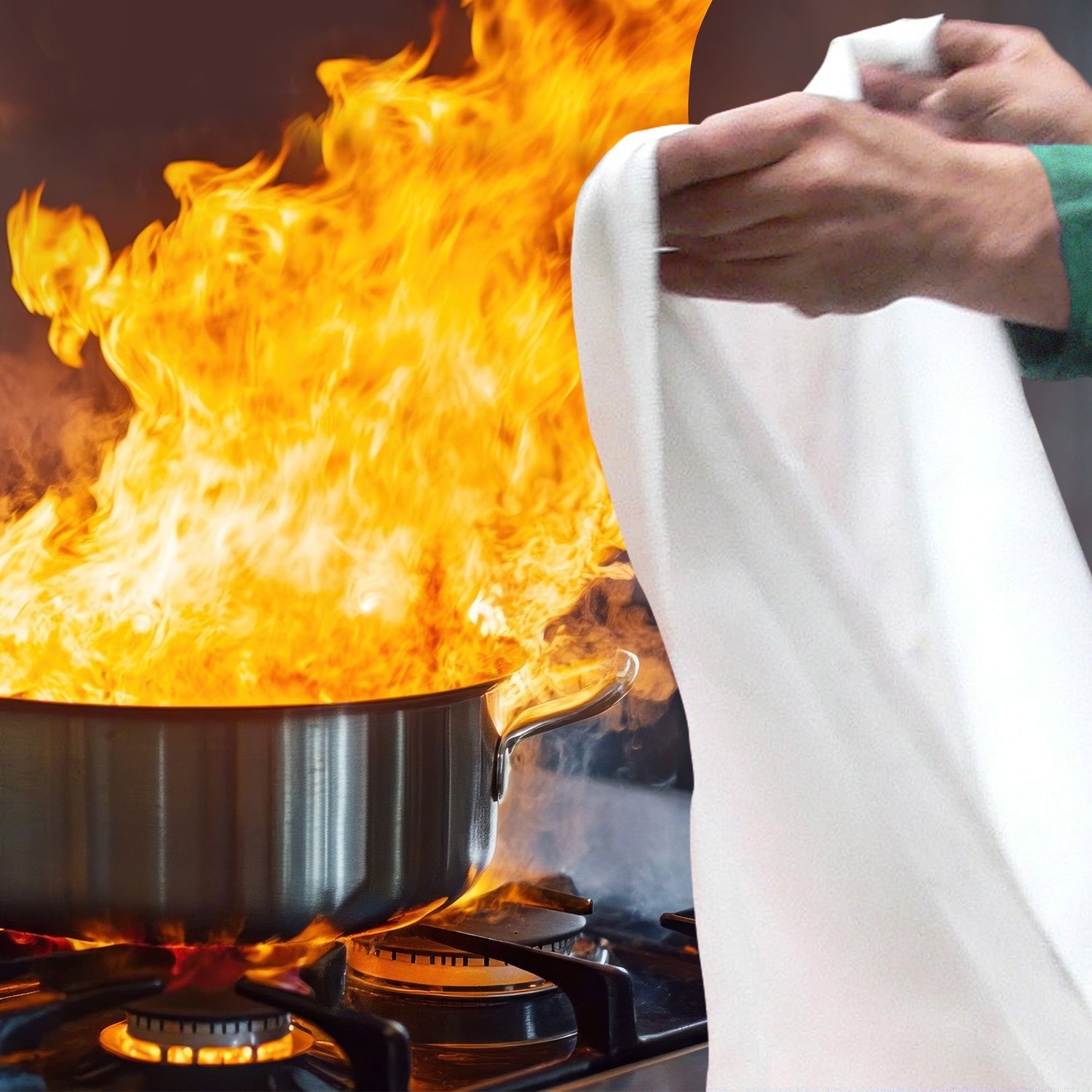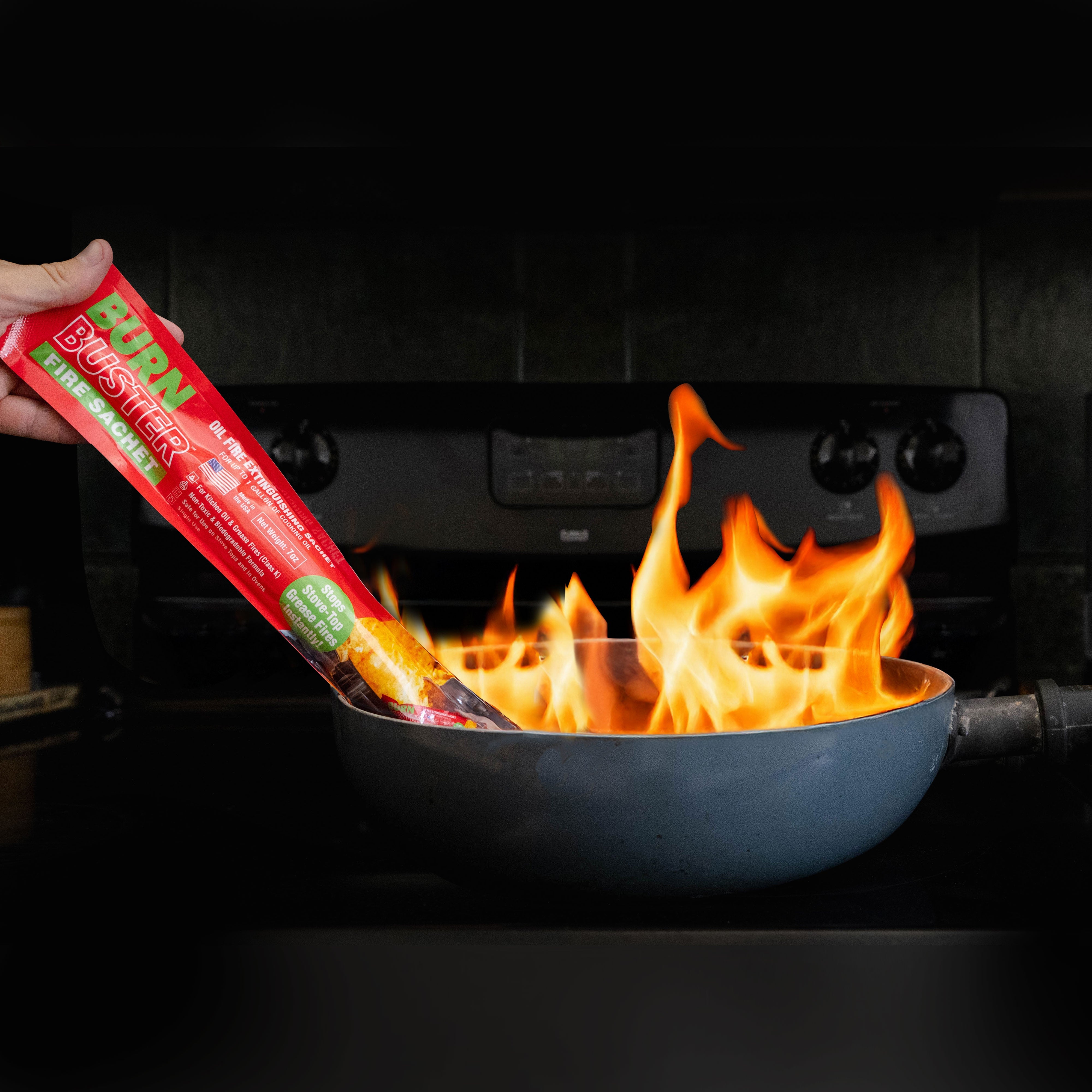In any fire emergency, seconds matter. Knowing how to escape quickly and safely is essential. One tool that safety experts and fire departments often recommend is a fire blanket — not just for putting out small fires, but as a shield to carry you out of danger.
What Is a Fire Blanket?
A fire blanket is made from fire-resistant or flame-retardant materials like fiberglass or treated wool. Its job is to smother flames by cutting off oxygen, one of the three ingredients a fire needs to burn. Wikipedia+2MIRA Safety+2
Fire blankets come in a variety of sizes, from small kitchen versions to much larger sheets meant for escaping through smoke-filled or fire-affected areas. Fire Protection Online Ltd+1
How Fire Departments and Experts Endorse Them
-
Many safety authorities list fire blankets as part of home and business fire safety kits, especially in areas like kitchens or near heat sources. They are praised for being simple, fast to use, and less messy than chemical extinguishers. Fire Protection Online Ltd+2MIRA Safety+2
-
Standards such as BS EN 1869 (in the UK/Europe) cover certified fire blankets and what performance they must meet. These include things like heat resistance and the ability to extinguish typical small fires (kitchen stove fires, clothing fires, etc.). Fire Protection Online Ltd+2Mart Cobra+2
-
Safety experts recommend placing blankets in accessible locations near likely escape paths, so you can reach them even when visibility is reduced or a fire is spreading. Fire Fighter Industry+2MIRA Safety+2
Using a Fire Blanket to Escape: Step-by-Step
Here’s how you should use a fire blanket to protect yourself while escaping:
-
Stay low and stay calm. Smoke and heat rise, so crouch or crawl if needed. wilcoesd9.org+1
-
Grab the fire blanket swiftly. It should be stored somewhere clearly visible and reachable — often near doors or exit paths. Fire Fighter Industry+1
-
Hold it correctly. Use the tabs or handles. If possible, wrap the top edge around your hands as protection. Cover as much of your body as possible, especially head, neck, and torso. fireandsafetycentre.co.uk+1
-
Use the blanket as a shield. Place the blanket between you and the flames or heat source. Ideally, crawl if you’re moving through a fire-affected area. MIRA Safety+1
-
Exit safely. Move toward the nearest exit. Close doors behind you if you can, to slow fire spread. Once outside, call the fire department. Fire Protection Online Ltd+1
Situations Where It’s Particularly Helpful
-
Clothing Fires: If a person’s clothes catch fire, wrapping them in a fire blanket and encouraging “stop, drop, and roll” can stop the flames quickly. Fire Protection Online Ltd+1
-
Kitchen Fires: For small stove or pan fires where flames are still contained, a fire blanket can smother flames more safely than water (which can spread grease fires). Fire Protection Online Ltd+2MIRA Safety+2
-
Smoke & Heat Escape: When a fire blocks clear exit paths, wrapping yourself in a fire blanket provides a layer of protection against radiant heat, embers, and flames. MIRA Safety
Limitations and When NOT to Rely on a Blanket Alone
-
If the fire is large or spreading rapidly, a fire blanket may be insufficient. Always prioritize escape and calling emergency services. Fire Protection Online Ltd+1
-
Fire blankets are not always suitable for certain types of fires, such as high-voltage electrical or large grease-pan fires, depending on the product and whether it’s certified for those uses. Wikipedia+3Parcil Safety+3MIRA Safety+3
-
After using a blanket, it may be compromised (heat damage, soot, etc.), so it should be replaced. Also, inspect regularly for wear and damage. MIRA Safety+1
Best Practices: Storage, Maintenance, and Training
-
Keep fire blankets in visible, easily accessible places — ideally near exits and in kitchens. MIRA Safety+1
-
Ensure everyone in the home or workplace knows where the blanket is and how to deploy it. Occasionally practice escape drills.
-
Inspect the blanket regularly (annually, or per manufacturer guidance) for tears, damage, or wear. Replace if damaged. MIRA Safety+1
Fire blankets are a simple but powerful tool in the fire-safety toolkit. They are endorsed by safety experts and certified under standards like BS EN 1869 for many household fire risks. Using a fire blanket to shield yourself as you escape a fire can literally save lives — provided it’s deployed quickly, stored correctly, and used safely.
-
NFPA – Fire Escape Planning:
https://www.nfpa.org/education-and-research/home-fire-safety/fire-escape-planning
Use for linking to official fire escape planning recommendations. -
U.S. Fire Administration – Fire Safety at Home:
https://www.usfa.fema.gov/safety/tips/home/
Use to back up statistics about home fire causes. -
Red Cross – Fire Escape Plan:
https://www.redcross.org/get-help/how-to-prepare-for-emergencies/types-of-emergencies/fire.html
Great to reference under your “Step-by-Step” section. -
UK Gov – Fire Blanket Guidance (BS EN 1869 Standard):
https://www.gov.uk/government/publications/fire-safety-standards/fire-safety-standards
Perfect for referencing fire blanket certification and proper usage. -
National Fire Chiefs Council (UK) – Fire Blanket Advice:
https://www.nationalfirechiefs.org.uk/Position-statements
Use to support statements about fire service endorsement of fire blankets.



Leave a comment
This site is protected by hCaptcha and the hCaptcha Privacy Policy and Terms of Service apply.